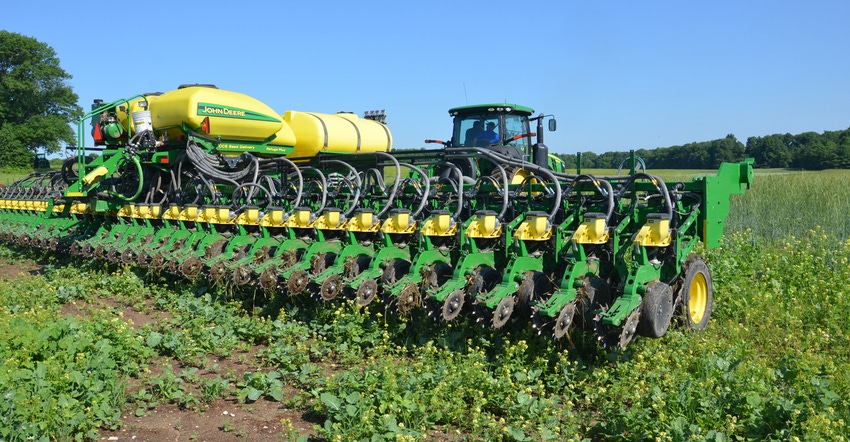
Viewers tuned in to a virtual program about the 4R nutrient management concept recently. Sponsored by various ag players, including Corteva Agriscience, the discussion pointed out why the 4R concept is critical today, and where cover crops might fit in when managing nutrients and improving soil health.
The term 4R refers to applying the right product at the right rate at the right time in the right place, notes Ben Wicker, a farmer and executive director of the Indiana Agriculture Nutrient Alliance.
One of the people joining Wicker in the discussion was Dan Schaefer, director of nutrient stewardship for the Illinois Fertilizer and Chemical Association. He has worked with Emerson Nafziger as he continues fine-tuning nitrogen rates for Illinois, and with other researchers as they determine how cover crops can be used successfully in cropping systems.
Wicker and Shaefer addressed these questions from viewers:
Some people talk about an allelopathic effect of cereal rye on germinating corn plants in cover crop systems. Is this real?
Schaefer: There appears to be an effect, but it isn’t proven. We’ve found that if you are planting corn into cereal rye, the important thing is to terminate the cereal rye early and then focus on nitrogen management early in the season. In studies we’ve participated in, 100 pounds of nitrogen upfront and 100 pounds sidedress in continuous corn with a cereal rye cover crop killed early seems to perform well.
Does wheat count as a cover crop if you’re planning to harvest it?
Wicker: No, not from a cost-share standpoint in programs that provide cost-share to try cover crops. However, from the standpoint of diversifying your rotation and promoting living roots in the soil more of the time, it makes a lot of sense in many cases.
Is there a place for nitrification inhibitors in nitrogen management?
Schaefer: There certainly is. There are different types of nitrification inhibitors for different products. Work with your retailer to determine the best choice in your situation. In terms of the 4R concept, they can help on nitrogen management by keeping more nitrogen around for when it is needed.
Are there financial resources that can help a grower get started with 4R practices?
Wicker: Yes, you have lots of options. You may qualify for financial cost-share help, and you can certainly get technical help from various sources. USDA through FSA and NRCS offers the EQIP program, the CSA program and there may be cost-share available through local grant-funded programs. In many areas, you can hook up with an Extension educator, certified crop adviser or district conservationist and learn many things in advance so you don’t have to learn it all on your own. You’re most likely talking cost-share for cover crops or equipment to help move toward practices that better utilize nutrients.
Is it possible that the 4R market could be tied to financial incentives for farming green in the future?
Schaefer: There is a program in the Champaign, Ill., area called S.T.A.R. sponsored by the Champaign County Soil and Water Conservation District and companies like ADM. It stands for “Saving tomorrow’s agricultural resources.” The idea is to rate yourself as a grower and earn stars as you change to environmentally friendly practices. There is no money tied to it, but individuals are recognized for their achievements.
About the Author(s)
You May Also Like




